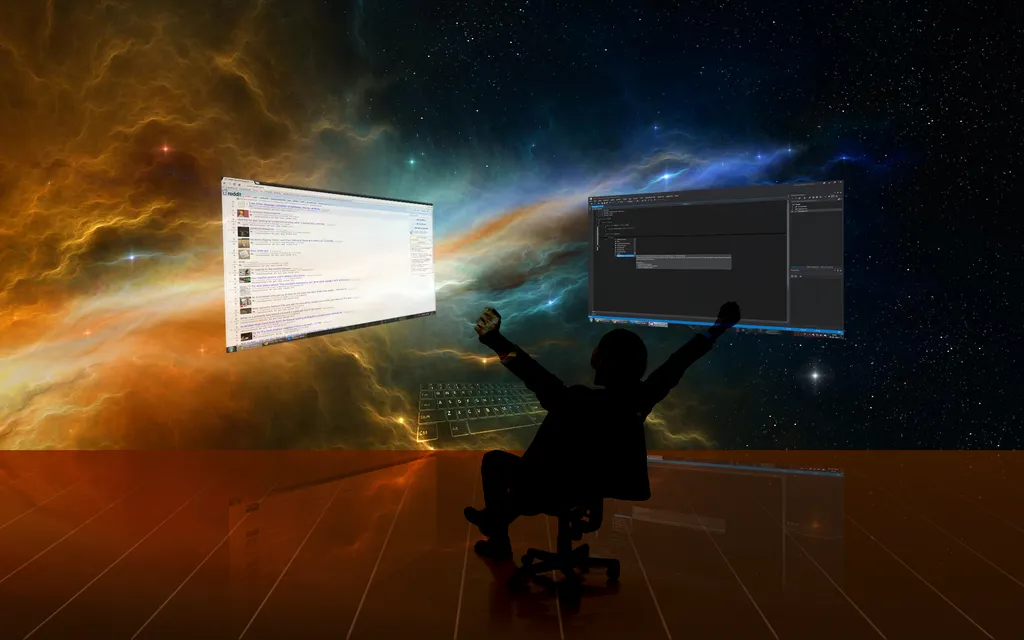Eric Florenzano is a VR consultant and game designer who lives in the San Francisco Bay area. He is currently working on new game ideas with a small team spread out across the US.
So far, so normal, right?. But what you don’t know is that Florenzano is one of a handful of advocates pioneering something they claim could transform work, end commuting, and even lead to a mass exodus from large cities: the virtual office.
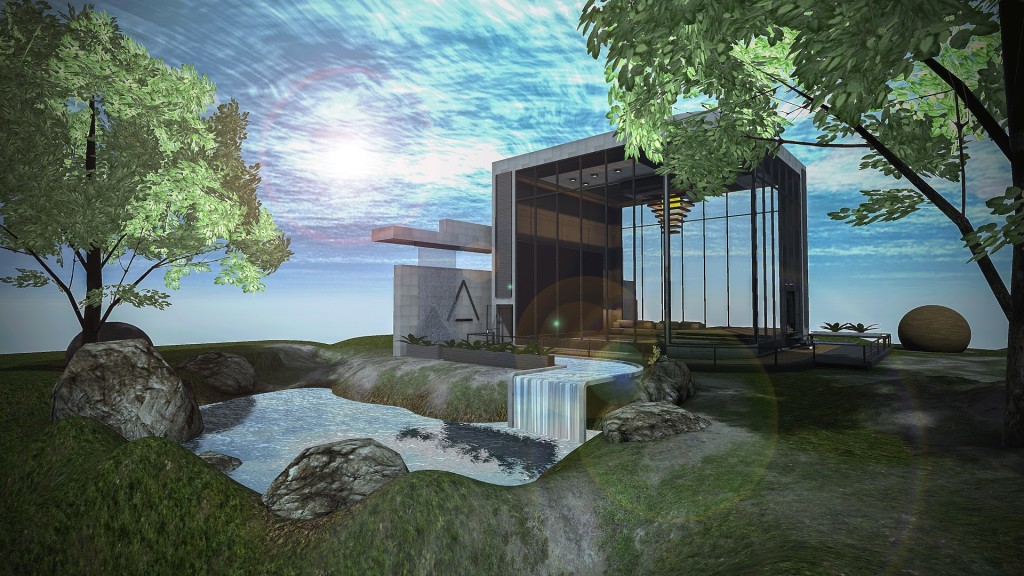
“There’s no physical office [for us.] It’s all virtual. That’s the crazy thing,” explains Florenzano. Rather than meeting in person or arranging a conference call, his team jumps into Bigscreen, which allows users, who are represented by floating heads and controllers, to share their monitors in virtual rooms.
The idea of the office-less company, enabled by email and Skype, has been around for years. But despite these tools, the idea remains niche, and telecommuting is still rare: according to Gallup research last year, American workers spend an average of just two days per month working remotely.
But working together in VR is vastly better than anything that has come before. “There is no other medium – a phone call, a Skype call, even video chat – that gives you anywhere near the amount of feeling you get when you’re in a VR room with somebody else, and you see their neck and head movements and you hear their voice,” argues Florenzano. He now holds a two to three hour meeting every week in VR.
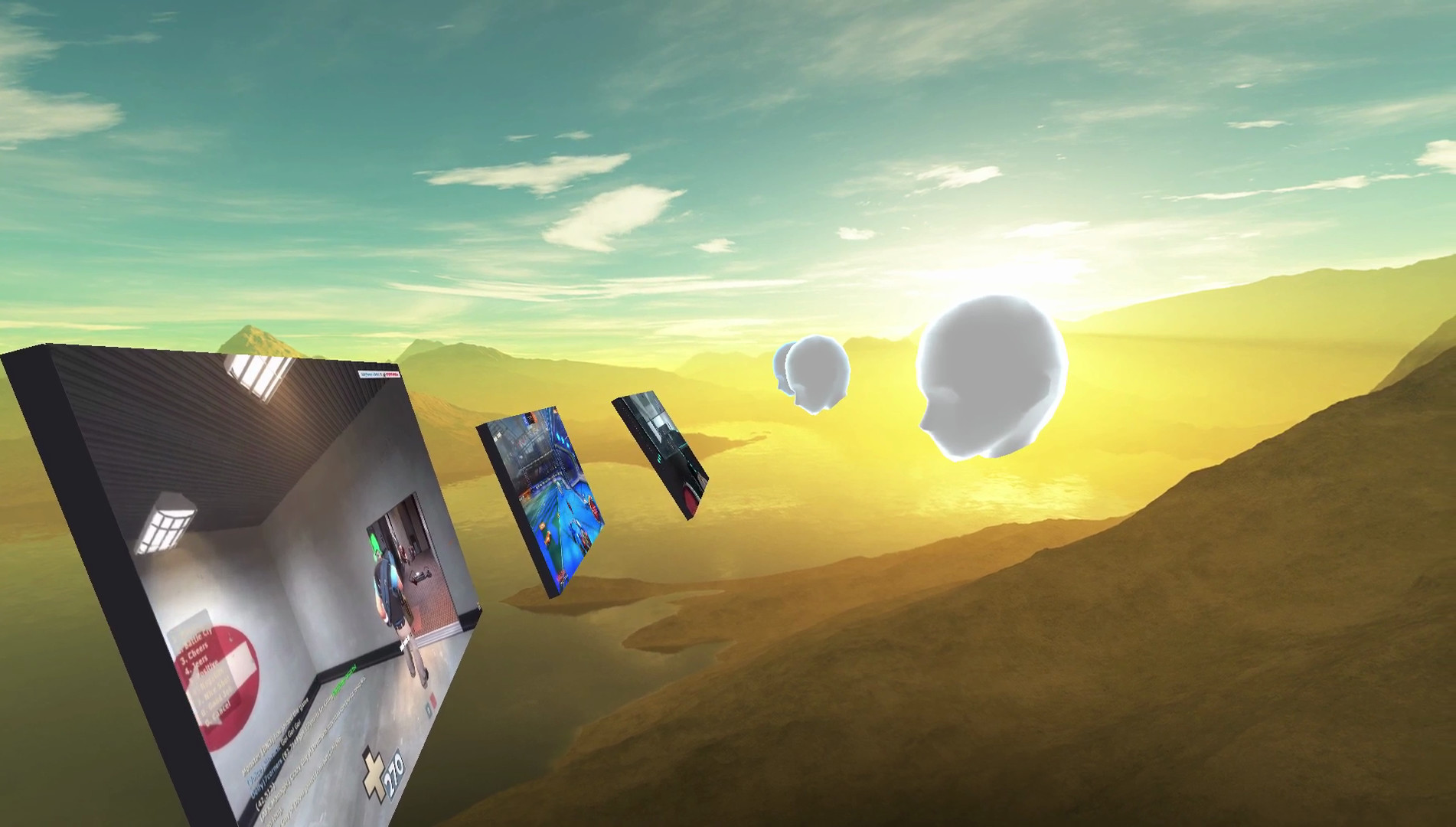
The advantages are obvious: there is no commute, no office to rent, and no overhead cost for a new space, such as heating or lighting. “It just makes it so much easier for groups of people to try something, without maybe the commitment of starting a company,” says Florenzano.
Darshan Shankar, founder and chief executive of Bigscreen, says that the business applications of VR were the first thing to strike him about the new technology, and he and colleagues regularly use Bigscreen to work together. “The interesting meta-point is that we actually build Bigscreen inside Bigscreen every single week,” says Shankar.
He believes VR offices, by allowing people to work from anywhere, could allow many if not all workers to leave huge, expensive cities and the draining commutes they entail behind, creating a historic shift with “massive implications” that urban planners should be thinking about now. Over several decades, the VR office could trigger a, “shift to a world where people live wherever they want – in rural areas, in smaller cities,” argues Shankar. Depending on your profession, anyone could be a digital nomad.
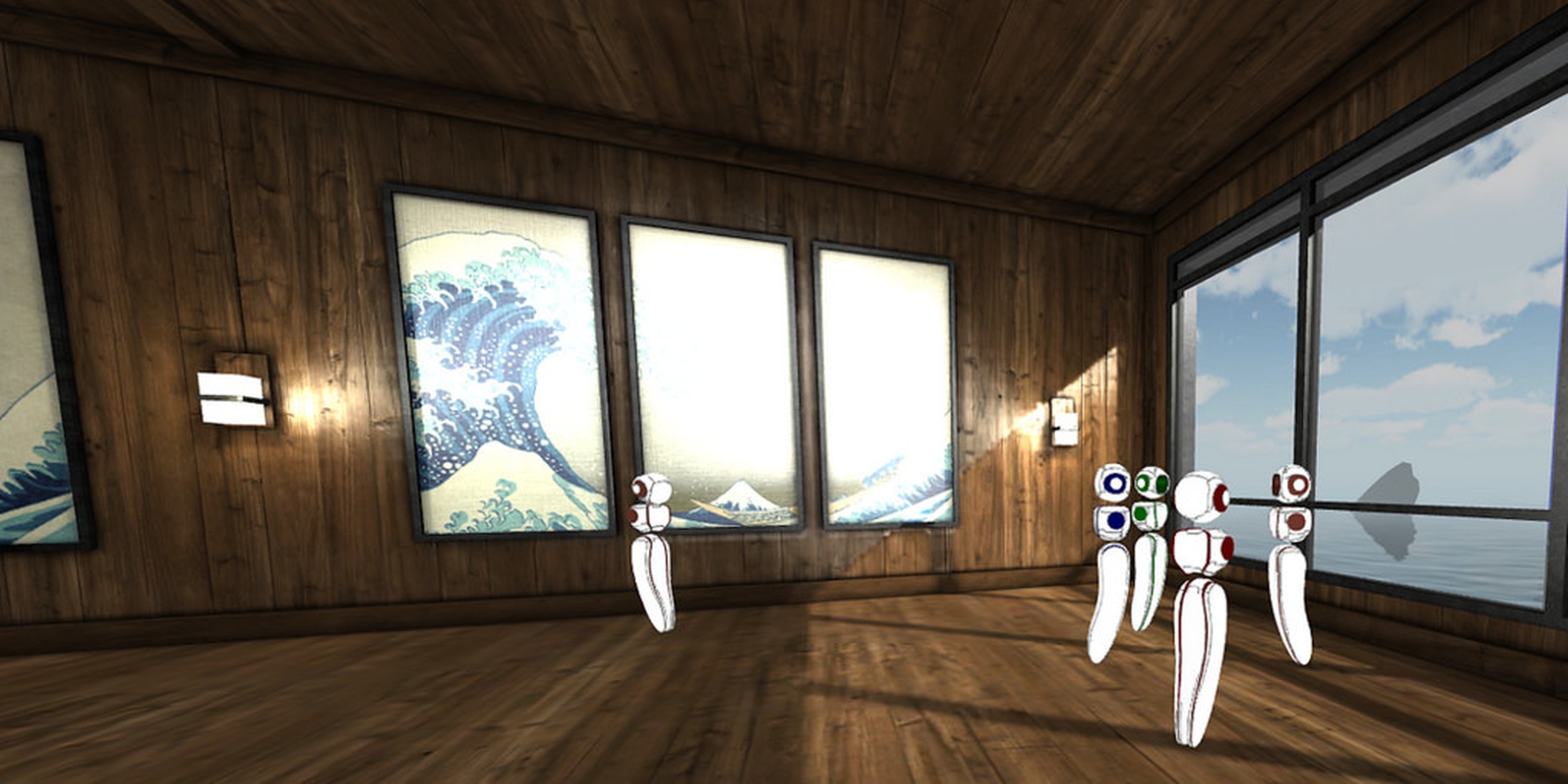
“It decouples your place from your opportunity,” argues Florenzano. A brilliant developer who lives in Sri Lanka could be hired by a US firm and fit in as a “completely standard employee at that company”, he says, doing away with immigration hurdles. Still, Western workers might not be thrilled about the prospect of VR-enabled job competition with overseas rivals. “There are winners and there are losers,” acknowledges Florenzano.
But if the VR office revolution is ever to come to pass, there are still many challenges ahead. The most immediate ones are technical.
At the moment, a virtual monitor is not nearly as sharp as a real one, and this causes problems for close work. “I have a hard time with the resolution right now, as I’m working with text as code,” says Florenzano. Designers and artists working on larger objects find it less of a strain, he says, but so far, he can only work on code for up to an hour due to the eye strain.
The weight of the current headsets can also makes long stints in VR uncomfortable, points out Shankar. “We’ve actually done meetings that are eight or nine hours long straight,” he says, but ultimately, they need to be equivalent to “a heavier pair of glasses”.
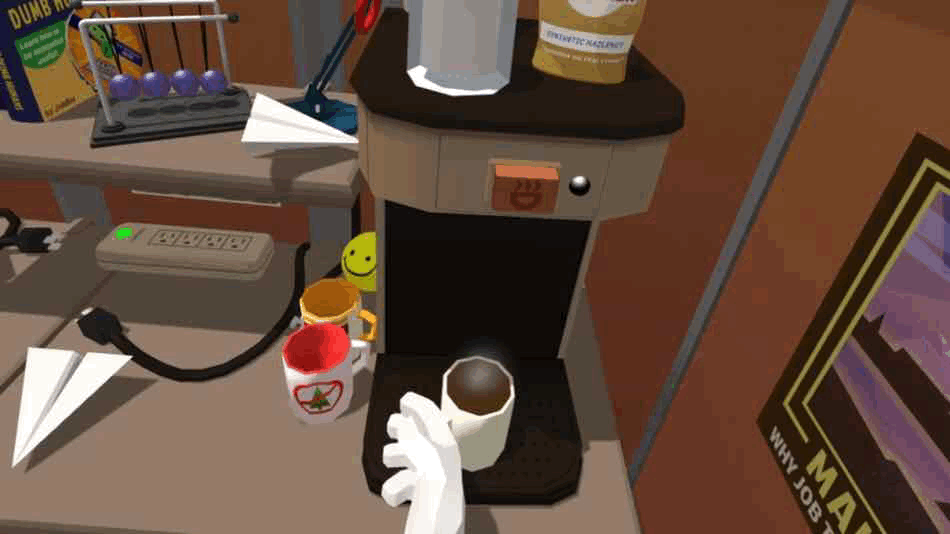
Then there is the coffee cup problem – VR needs to find a way of tracking real world objects, like drinks or keyboards, so that they can be used simultaneously. “I’ve actually tweeted every time that I’ve spilled my coffee because I’m wearing my VR headset,” says Shankar. “I think I’m at my sixth now.”
These problems, though substantial, seem solvable with more research and development. But there are much bigger social questions hanging over the VR office, which raise the question of why workers go into the office at all.
VR can be used purely for meetings. Or, more ambitiously, it can be a space where employees work together, chatting now and then, on their own projects in a shared room – in other words, a virtual replacement of the existing office.
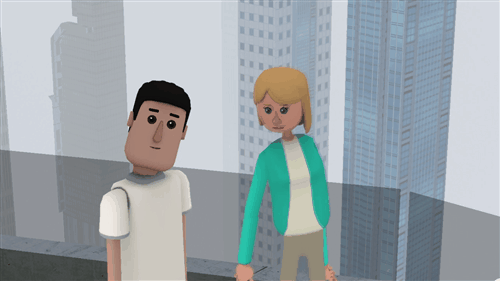
Eric Romo, chief executive of AltspaceVR – another avatar-based social VR space available for the Vive, Rift and Gear VR – is positive about VR meetings, where people “connect for a reason,” and AltspaceVR is now the default way the company meets with partners in other cities.
But he is much more sceptical about a full virtual office, or “idling in VR” as he calls it. “Am I going to get up in VR and walk around the virtual room and go to the virtual water cooler? I’m not sure,” he says.
An office without water cooler moments loses the “impromptu interactions” that Steve Jobs famously tried to encourage when he redesigned Pixar’s headquarters, Romo points out. Bumping into a colleague in the lift or cafeteria queue sparks “some conversation you wouldn’t have had, some thought you wouldn’t have had” on your own.
But could a VR office reintroduce these moments of serendipity by other means? A clever virtual lobby system could mimic the mingling that occurs in a real building, suggests Florenzano, and post-work VR gaming with colleagues could even replace office drinks. When experimenting, he found meetings over a game of virtual pool flowed particularly well. “A virtual pool meeting is the new golf meeting,” he says.
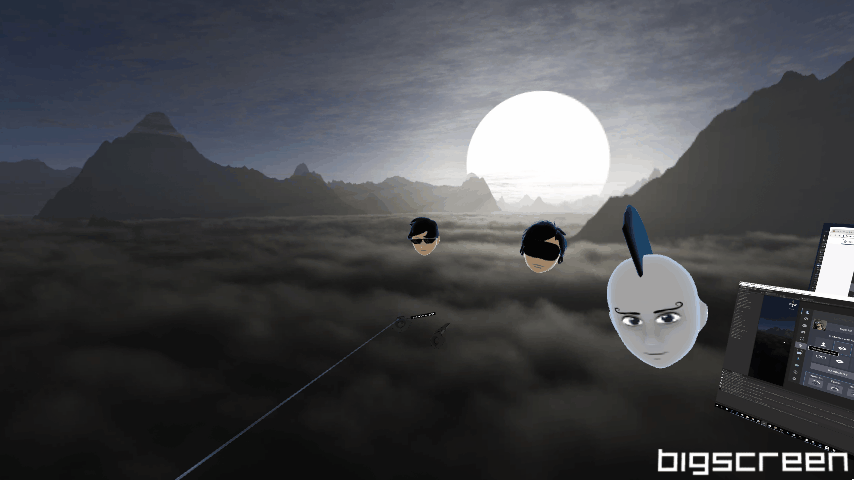
Much now depends on the quality of communication that VR allows and whether colleagues can strike up a rapport virtually. Bigscreen and AltspaceVR use avatars, which may seem like a temporary workaround, but both Romo and Shankar emphasize just how effective they can be and are in no hurry to move to photo-realism. It’s the same technology that Facebook is pursuing, as demonstrated by their Oculus Connect 3 social announcements earlier this month.
“Seeing the texture of your face, or your smile, aren’t actually necessary,” says Shankar. “People were forming deep emotions with each other over the telegraph,” he points out.
AltspaceVR has also experimented with eye-tracking technology, already being prototyped in some headsets, and the improvement in communication is “stunning”, says Romo. A person’s rate of blinking, for example, tells observers, “something about how comfortable or uncomfortable you are in a situation. So it was hugely additive,” he recounts.
For now, virtual offices remain a niche pursuit for VR enthusiasts. But bigger organisations are beginning to dip their toes in the water. Mike Harlick, who works on technology and innovation at the Bank of Ireland, has experimented with AltspaceVR and Bigscreen, as well as Rec Room, Turf, and vTime, and gave the technology a cautious welcome.
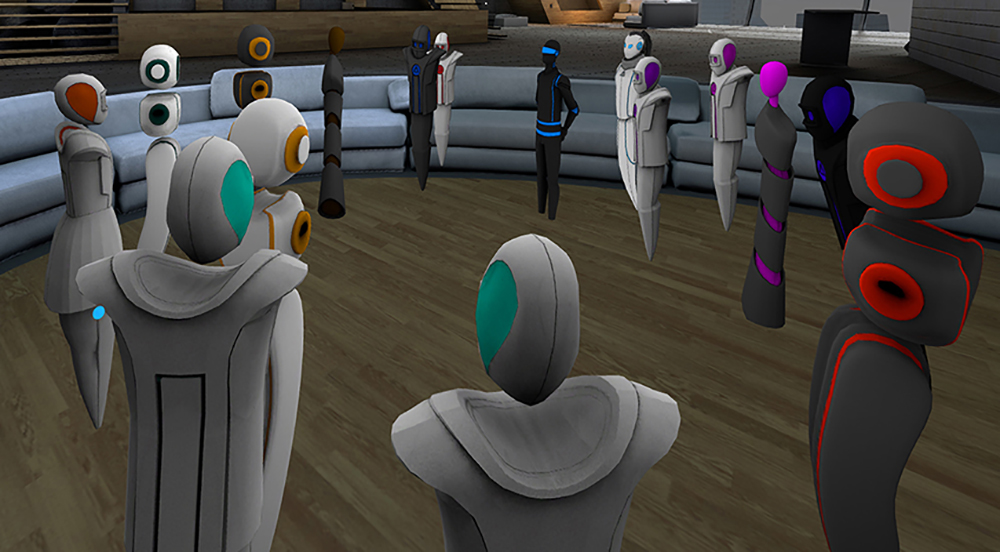
VR “increased non-verbal communication and the sense of connection” compared to a phone call, says Harlick. It is still difficult to know whether someone is paying attention in VR, he points out, but it also opens up new ways to improve productivity – like turning the room red when the meeting overruns, for example.
“Without doubt it will reduce the need to go into an office for certain people,” admits Harlick. VR is in its very early stages, he says, but even now, “there is enough technology to allow this to happen for some.”
David Matthews is a freelance journalist and science/research reporter for Times Higher Education. Follow him on Twitter: @DavidMJourno.
Featured Image Crerdit: Mongobly on Reddit

